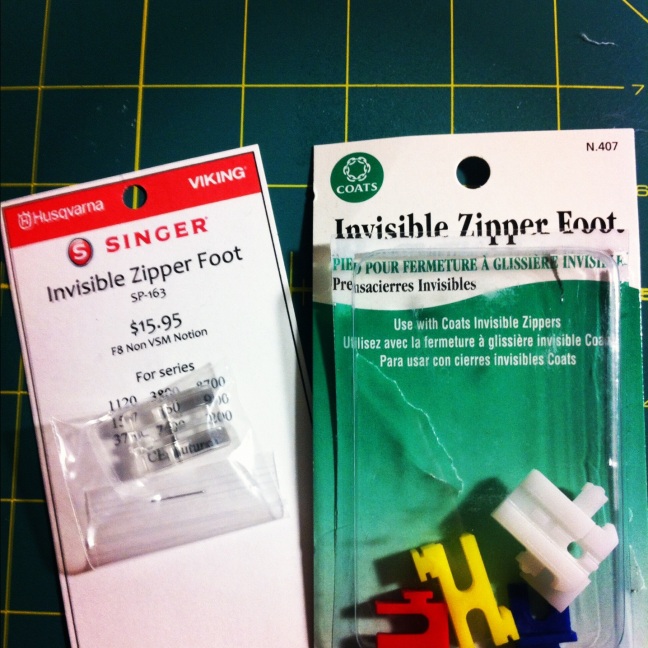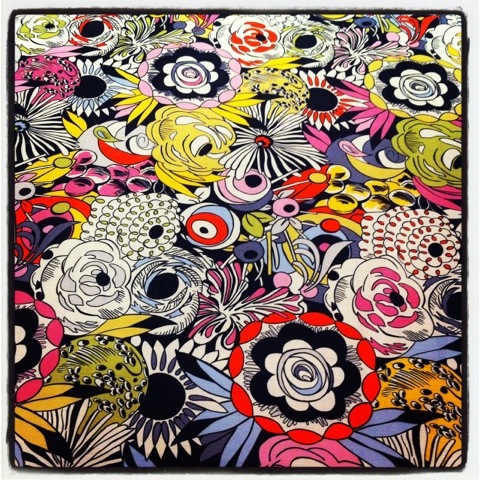 I’m heading to Austin after work for Quilt Con 2013. Looking forward to learning new skills, catch-up with family and friends and visit some of my favorite restaurants. I’ll be tweeting and instagraming as much as possible, so please feel free to follow. If you’re down there, come join CityCraft for Happy Hour at the Lustre Pearl on Thursday from 6 to 8pm. Cheers! xo Kristi
I’m heading to Austin after work for Quilt Con 2013. Looking forward to learning new skills, catch-up with family and friends and visit some of my favorite restaurants. I’ll be tweeting and instagraming as much as possible, so please feel free to follow. If you’re down there, come join CityCraft for Happy Hour at the Lustre Pearl on Thursday from 6 to 8pm. Cheers! xo Kristi
make: chevron throw pillow cover
After my sewing debacle earlier this week, I decided it was time to repair and finish the Chevron Stripe pillow. Boy am I glad I did, I love this bad boy.
As I mentioned on Monday, the original back to this pillow was supposed to be black, white and grey striped but as you can see in the picture above, I failed to calculate and measure properly and ended up with a back that was 2 inches too short. Of course, I figured this out after I had already sewn in the invisible zipper. I knew I didn’t want to go back and have to start over, so I decided to repair it with a quick and easy fix. I simply measured the black section of the first back and cut it four inches from the zipper.
I then cut another piece of black fabric 4 x 20 to be the bookend on other side. Then I measured and cut the center panel so that it was 13 x 20. This gave me 1/4 inch seam allotments to sew the center panel to the left and the right to the center resulting in a 20 x 20 back. If you measure correctly the first time, you won’t need to do this. I recommend that you simply cut a 20 x 20 piece to start with and skip this whole headache. But if you do happen to screw up like I did, realize for the most part there are ways to save a project.
If done properly, pillow covers are a cinch to make. Start with two matching sizes panels, my pillow form was 20×20 so that’s the size of the panels I used. Sew the invisible zipper along one of the sides. For more on how to do this, see this post here.
Then once the zipper is in, pin the panels right sides together along the remaining three raw edges. Make sure that your zipper is open at this point.
Sew using a 1/4 seam allotment. Trim the excess fabric and turn the pillow right side out. Insert form and there you go. Houston, we have a pillow.
To learn how to make your own chevron stripe fabric, check out our tutorials here and here.
Let us know if you make these, we’d love to see your new pillows. Enjoy the weekend!
xoxo
Katie
measure twice, cut once.
This old sewing adage finds it way into my life more often than I care to admit. I have a running joke with my friends that it usually takes me two times to get something right the first time. My sewing, crafting and baking adventures tend to fall into the trial and error category. I feel like I’ve made so many mistakes, that I should be used to it by now, expect that I will make them but instead, I feel like I should be mistake free. Unfortunately, that’s not the case.
Last night was no exception, I sat down to sew a pillow cover using the zigzag/chevron fabric we showed you how to make last week, it was like a British farce. Everything that could go wrong did. I only had 18 inches of fabric left for the back, which needed to be 20 inches. I sewed the zipper in wrong. ON BOTH SIDES. I decided to sew together fabric pieces to make the back. Cut sewed and after I finally got the zipper in, realized that I had cut it two inches short. At that point, I had to just walk away.
Sometimes you have to just let go, pick yourself up and try again tomorrow. Because the thing is, everyone makes mistakes. Everyone. Martha, Julia, Nigella, everyone. Mistakes Happen. Shit Happens. We are all just trying to get it right.
So while I know I’m supposed to always make sure to measure twice, so that i cut only once, it doesn’t always happen. But tomorrow, I will try again.
stitch: chevron fabric
I don’t know about you but I am obsessed with stripes lately, specifically chevron stripes. A few months ago, Kristi and I were talking about this chevrons and I mentioned how frustrated I was that I couldn’t find any chevron striped fabric in my local fabric store. At the time, I was ambitiously hoping to sew my own bed skirt (it didn’t happen) but she wisely pointed out that I could easily make my own chevron striped fabric using a basic quilting technique. This is why it’s so great to have someone to share your obsessions with, a healthy dose of perspective and plethora of ideas. This week we are going to do an entire series on the Chevron stripe. Today, I’ll start by showing you the basics of how to build your own striped fabric and then throughout the week we will show you different ways that you can apply this in your next sewing project. So let’s get to it!
Here’s what you will need:
+ Two or more different fabrics (I chose solid grey, white and black)
+ Marking pen or chalk (optional)
+ Rotary Cutter & Mat
+ Ruler
+ Thread, Pins & Scissors
+ Sewing Machine
Let’s start by figuring out the dimensions we want the of the final fabric we need. I am going to use this to make a 20″x 20″ pillow cover. So to give myself 1/2 in for seam allotments, I want to have a 21″ x 21″ square and I want to use the following pattern:
I know I want this to be 6 squares wide and 6 squares high. 21 divided by 6 is 3.5 and I want to give myself 1/4 inch on either side for the seam allotments, which means that I need my bi-colored squares to be 4″ x 4″. I can also determine by looking at my pattern, that I will need a total of 36 squares, 24 black and white and 12 grey and white. Which means that I will need to cut 18 squares of white, 12 squares of black and 6 squares of grey.
This project is based on a quilting technique where you sew together two equal squares of fabric to create half square triangles.
Start by placing the two fabric squares together and using a marking pen, draw a straight line along the diagonal. Alternatively, you can just cut the fabric down the diagonal.
Then, using your sewing machine, with a 1/4 inch seam allotment, sew two lines on either side of the diagonal line.
Then, if you haven’t already, separate the into two squares by cutting down the diagonal and then press open the seams.
Then, using your ruler and rotary cuter, trim the excesses. Now is also the time to make sure that your squares are even.
Once my squares are finished, I can begin to lay them out into the pattern:
You can also this technique to create a herringbone pattern like this:
Isn’t that fun! Tomorrow Kristi will show you how to sew the pieces together and will show us her Chevron Quilt she’s been working on. Then on Thursday, I’ll show you how to make a Chevron Striped pillow cover!
xoxo,
Katie
stitch: pillowcase dress tutorial
One of my favorite kids is turning two next week and for her birthday, I decided to make her a pillowcase dress. This simple pattern is so fun because it doesn’t require any special materials and is washable, because its cotton — a must for any active girl and her parents!
This sweet birthday girl has the biggest blue eyes, so I decided to go with a green and white Lisette fabric and my favorite blue and white polka dot ribbon. The following tutorial fits a size 2T little girl.
Here’s what you’ll need:
+ 1 yard of cotton fabric
+ 2 1/2 yards of 3/4 inch wide grosgrain ribbon
+ Rotary Cutter & mat
+ Ruler
+ Sewing Machine, pins, scissors
Start by washing, drying and ironing your fabric. Fold the fabric in half lengthwise (with the selvages together). Using your ruler remove the selvage. Then using the following measurements, cut your fabric:
Since you will need two identical pieces, a shortcut is to fold the fabric twice. So after your first fold (matching the selvages, fold your fabric again widthwise.) The original fold should be lined up against the 20 1/4 inch cut and the second along the 10 inch or bottom of the dress. I’m a visual person, so here is the process (using different fabric). Click the image to enlarge.
So once you have everything folded and lined up, use your rotary cutter and ruler to cut according the measurements listed above. The armholes should be 6 inches down from the neck and 3 inches out.
Once you have cut the pieces out, make one last cut along the bottom (10 inches folded) to make two separate matching pieces. If you are using a patterned or striped fabric, you will want to take extra care in cutting your fabrics so that your stripes or pattern line up. If this is the case, make a template using copier paper and lay it out on the fabric before cutting. And you may need more than 1 yard of fabric to make sure your patterns match.
Once you have cut the two pieces, lay them flat on your table. Cut two 20 inch pieces of your grosgrain ribbon, place the top of the ribbon two inches from the bottom of the dress (the 10 inch cut, 20 inches long if unfolded) on the right side of the dress. Pin and sew ONLY the top of the ribbon in place.
Then, place the two pieces wrong sides together down on your table. Pin from the bottom of the armhole to the bottom of the dress and sew using a 1/4 inch seam allowance. Remove the pins and press the seam to one side using your iron. Make sure that it is on the appropriate setting for your fabric so that you do not damage it. Do not press the seam open! Repeat on the other side. Then turn the dress inside out. Again, pin from the bottom of the armhole to the bottom of the dress. Sew again, using a 3/8 inch seam allowance. This is called a french seam and eliminates the need to surge or zigzag the edges.
Next, with the dress inside out, fold and pin the armholes in using a 1/4 inch seam. Carefully sew in place. Cut the remaining ribbon in half, you should have two 25 inch pieces. Find the center of the ribbon and pin the wrong side of the ribbon to the wrong side of the neck at the center. You will want to pin the ribbon 1/4 inch from the edge. Sew in place the width of the ribbon. This will hold the ribbon in place but will still allow you to gather the fabric on it later to form the neckline.
Once the ribbon is sewn in place, fold both the ribbon and the fabric down 1 1/4 inch to create the casing at the neckline. Pin in place and sew. Be careful not to sew the ribbon during this process. This will prevent you from being able to gather the fabric on the ribbon for the neckline.
Lastly, finish the dress by sewing the bottom hem. Fold the raw edge of the fabric up 1 inch and pin in place. Turn the dress right side out and make sure that the bottom of the ribbon is pinned in place. Make adjustments if necessary. Then turn the dress inside out and sew the hem in place.
Once you are finished, turn the dress right side out and gather the fabric on the ribbons at the neckline and tie the ribbons into bows. There you have it, the pillowcase dress. I can’t wait to see her in it! I imagine, it will look a little something like this:
Blurry (because two-year olds are very busy…) but loved. Happy Birthday WEW!
xoxo
Katie
stitch: this girl’s friday clutch
Equally appropriate for a Friday night out on the town and a fashionable trip to the market, This Girl’s Friday Clutch is big enough to hold more than a tube of lipstick and is sure to make any outfit adorable.
I mean, look at her… she’s the perfect combination of business and pleasure and has quickly become my everyday companion. This bad boy only took about 45 minutes to make. She’s so cute, it made me forget the four (YES FOUR) failed attempts at putting in a zipper. Plus, she introduced me to my new best friend, the invisible zipper foot. What can I say, I’m in love (and just in time for Valentine’s Day!)
Once you get past the zipper phase, this bag is a cinch. If you are intimidated by the zipper (trust me I get it- 4 failed attempts), then follow the instructions from Kristi’s iPad case to put in a snap closure.
Supplies:
+ 1/2 yard decorative fabric for outside of clutch
+ 1/2 yard fabric for lining
+ 1/4 yard of heavyweight fusible stabilizer
+ 1/4 yard of batting
+ 14 inch invisible zipper (color matched to either the outer fabric or lining)
+ rotary cutter
+ Grid Ruler
+ Iron
+ Coordinating thread
+ Sewing Machine
+ Invisible Zipper Foot
Steps:
Cut the fabric:
Cut two 9 inch by 12 in pieces of each of your fabrics (2 outer, 2 inner) and the stabilizer and two 8 inch by 11 inch pieces of batting (you’ll have eight pieces total)
Side panels:
To assemble the side panels, think of them as two sandwiches. Start by placing the one cut piece of the decorative outer fabric face down on your table. Then the stabilizer, followed by the batting. Since batting is an inch smaller all around, just try to center it (doesn’t have to be perfect). Then place one piece of the lining fabric face up on top. Repeat for the second side panel.
Pin the layers of one of the side panels together along one of 12 inch long side of the fabric. You are only going to sew one side of the sandwich to hold it together. You want to do this one edge on a long side, this will prep for the zipper. Sew using a 1/4 inch seem allowance. Set aside. Repeat with the second panel.
Invisible Zipper:
Next, let’s tackle the invisible zipper. Like I said, the key for this is having an invisible zipper foot. I tried using just a regular zipper foot (attempts #1 & 2) and the plastic zipper foot (attempt #3) before realizing that it was worth the $15.95 to buy the actual zipper foot for my machine. Quite possibly the best decision I’ve made this week. The beauty of the invisible zipper foot is that it has a groove that holds the coils so you are always sewing as close as possible to the zipper (but not on it). This will result in a uniform seem and closure. Also, it prevents you from sewing OVER the coils (attempt #1) which will render the zipper useless. I know zippers can be scary but with the proper equipment and some patience, they are a great tool. I referenced this tutorial over on Sew4Home.com for this. Their instructions are clear and concise plus the article has pictures for every step of the process. Reference it, hell bookmark it, so that if you get confused you can easily see the steps.
First you will need to prep your zipper. To do this unzip it and place it face down on your ironing board. With your iron on the lowest setting, press the zipper flat (the coils will roll). As long as you have your iron on the lowest or synthetic setting, you won’t melt the teeth.
Once you’ve ironed both sides of the zipper flat, we are going to pin it to the fabric. Take one of your side panels and pin to the edge that you have already sewn together. Place the right side of the zipper on top of right side of the outer decorative fabric of one of your side panels. The zipper teeth should be away from the raw edge of the panel (see above). Line up the outside of the zipper (the side without teeth) to the outside of your side panel. Once one side is in place, repeat this step with the second side panel.
With the invisible zipper foot on your machine, line the teeth up on the right hand side of the foot and start sewing. Removing pins as you go. Sew from the opening of the zipper down to the bottom. With the second side panel, you are now going to want to line the teeth up in the left side groove.
Sew again from the opening of the zipper down to the bottom. Then, carefully pull the zipper closed making sure that you don’t pull the zipper off (attempt #4). Switch to your regular zipper foot and sew from the last stitch you were able to make with the invisible foot to the end of the zipper to secure the bottom to your fabric. Repeat on the opposite side. Cut away excess fabric and steam the seams.
Finish the clutch:
Open the zipper again and place the right sides of the outer fabric together and pin around the remaining three edges. The purse should be inside out and the zipper should be open. Sew around three edges using a 1/4 inch seem allowance. Make sure that you sew over the zipper on the sides to complete the purse. Turn the purse inside out, start by using the eraser of a pencil to turn the bottom corners out so they are square and pull everything through the open zipper.
Fill ‘er up:
Insert money, id, cell phone, perfume and lipstick and you’re ready to hit the town.
Have a great weekend everyone!
xoxo
Katie
stitch: Weekend clutch
swoon: Liberty of London Fabric
I scored this Liberty of London fabric at CityCraft this weekend. I see a tunic dress in the near future!
stitch: iPad Case Lesson Learned
99% of the time my fabric stash dictates the kind of project I’m going to make. In this case, I perused my local and fabulous fabric shop, City Craft, and fell in love with the hot pink echino sunglasses paired with the day of the dead fabric by Alexander Henry. I wasn’t sure what I was going to make when I bought the fabric, but knew I would come up with something quickly. And sure enough, Christmas was coming and I was in need of a new iPad case for the airplane ride. Done and done.
I tripled checked my measurements and constructed it pretty quickly. I wanted the case to be durable and protective so I used fuseable interfacing on the backside of the echino fabric and then continued on.

Time to get the iPad…
And it doesn’t fit. . .due to the fuseable interfacing that I used. So the big lesson learned here – when using fuseable interfacing add an extra inch or two to your project and double check your measurements. Even though my iPad doesn’t fit, I now have a new clutch to take out on a night on the town with the gals.
stitch: Last Minute Christmas Ornament
I decided this weekend to make ornaments with extra Christmas fabric that I had laying around. So for those of you who who are the DIY type (and need a last minute gift for a friend or co-worker) this is a quick and easy tutorial.
Supplies you’ll need:
2 pieces 3.5in x 3.5in Christmas fabric
Gold Ribbon (width is your choice)
Place first piece fabric right side down and place ribbon in the top corner. Then place second piece of fabric wrong side down and pin in place.
Stitch the edges with a zig-zag stitch and trim with pinking shears . . .
and viola, one less gift to worry about!









































